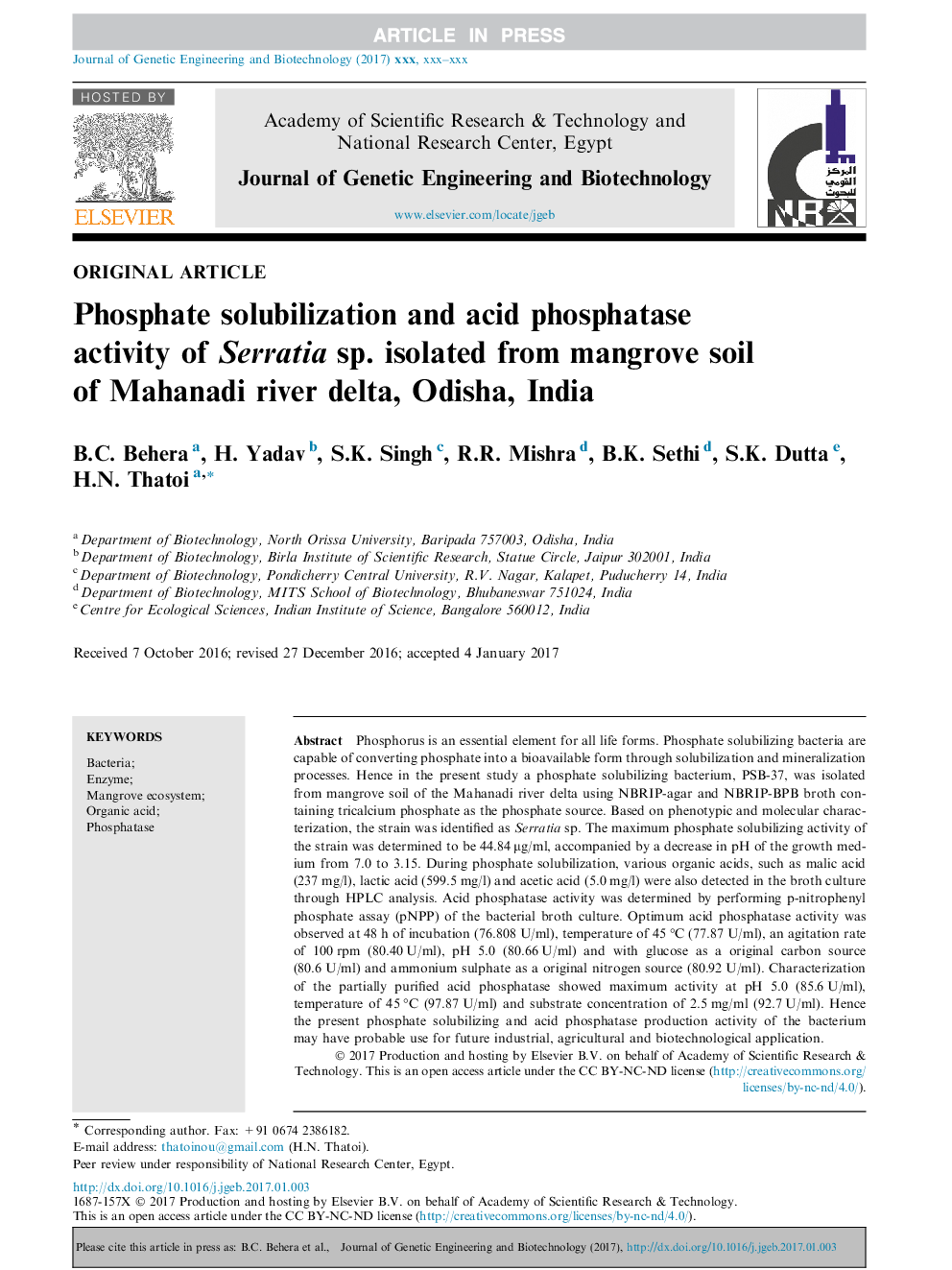| Article ID | Journal | Published Year | Pages | File Type |
|---|---|---|---|---|
| 8416514 | Journal of Genetic Engineering and Biotechnology | 2017 | 10 Pages |
Abstract
Phosphorus is an essential element for all life forms. Phosphate solubilizing bacteria are capable of converting phosphate into a bioavailable form through solubilization and mineralization processes. Hence in the present study a phosphate solubilizing bacterium, PSB-37, was isolated from mangrove soil of the Mahanadi river delta using NBRIP-agar and NBRIP-BPB broth containing tricalcium phosphate as the phosphate source. Based on phenotypic and molecular characterization, the strain was identified as Serratia sp. The maximum phosphate solubilizing activity of the strain was determined to be 44.84 μg/ml, accompanied by a decrease in pH of the growth medium from 7.0 to 3.15. During phosphate solubilization, various organic acids, such as malic acid (237 mg/l), lactic acid (599.5 mg/l) and acetic acid (5.0 mg/l) were also detected in the broth culture through HPLC analysis. Acid phosphatase activity was determined by performing p-nitrophenyl phosphate assay (pNPP) of the bacterial broth culture. Optimum acid phosphatase activity was observed at 48 h of incubation (76.808 U/ml), temperature of 45 °C (77.87 U/ml), an agitation rate of 100 rpm (80.40 U/ml), pH 5.0 (80.66 U/ml) and with glucose as a original carbon source (80.6 U/ml) and ammonium sulphate as a original nitrogen source (80.92 U/ml). Characterization of the partially purified acid phosphatase showed maximum activity at pH 5.0 (85.6 U/ml), temperature of 45 °C (97.87 U/ml) and substrate concentration of 2.5 mg/ml (92.7 U/ml). Hence the present phosphate solubilizing and acid phosphatase production activity of the bacterium may have probable use for future industrial, agricultural and biotechnological application.
Related Topics
Life Sciences
Biochemistry, Genetics and Molecular Biology
Biotechnology
Authors
B.C. Behera, H. Yadav, S.K. Singh, R.R. Mishra, B.K. Sethi, S.K. Dutta, H.N. Thatoi,
